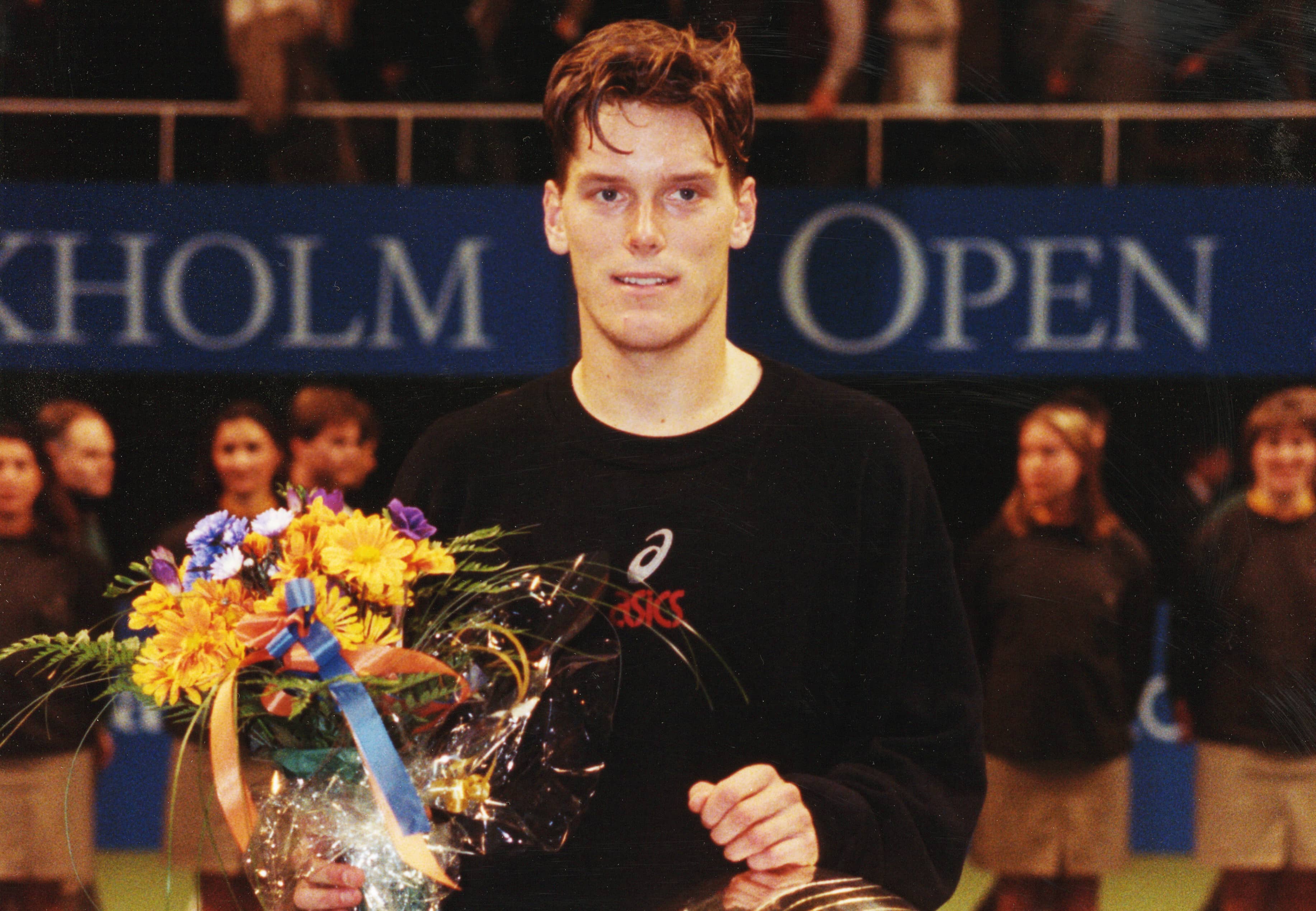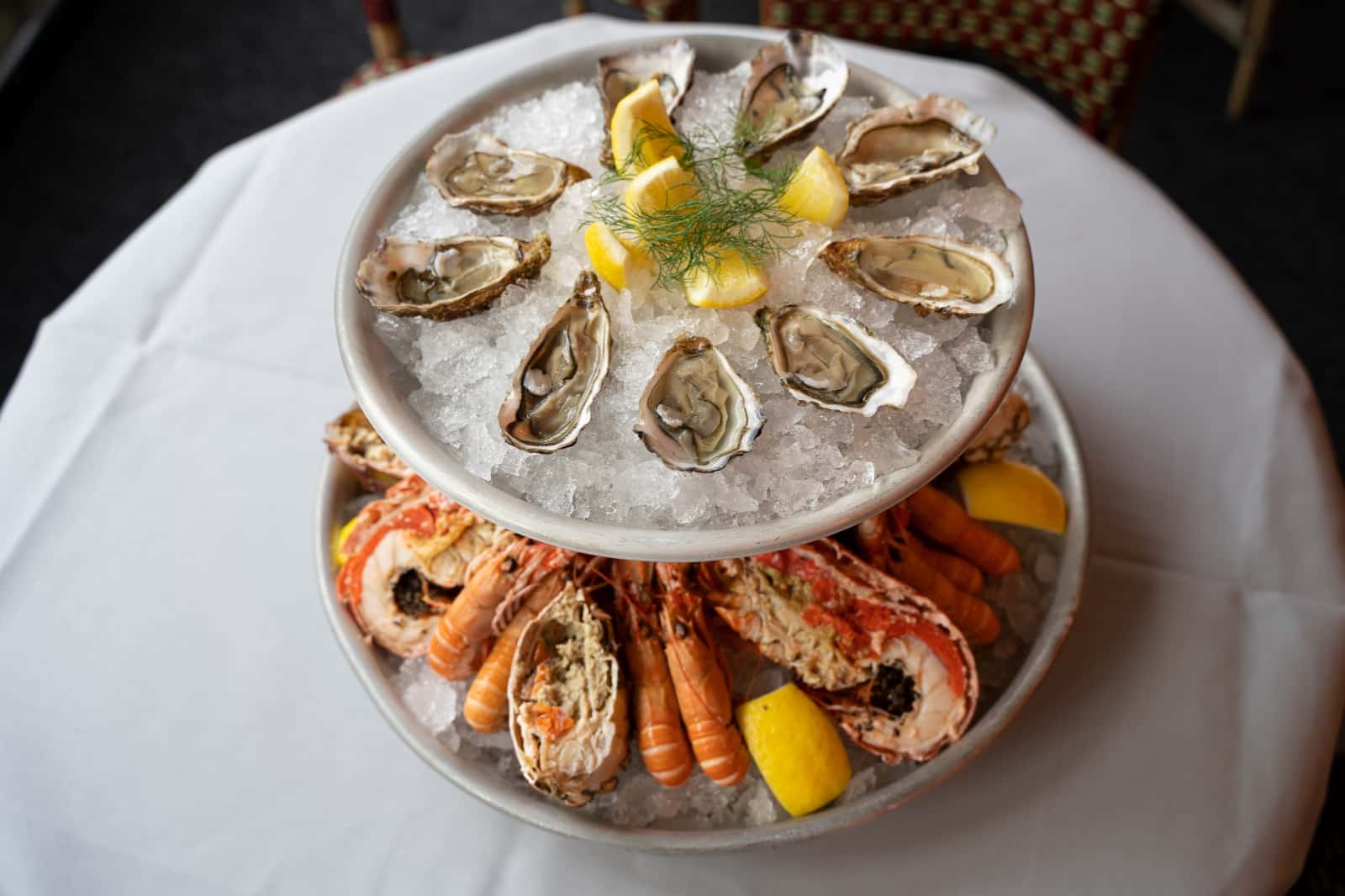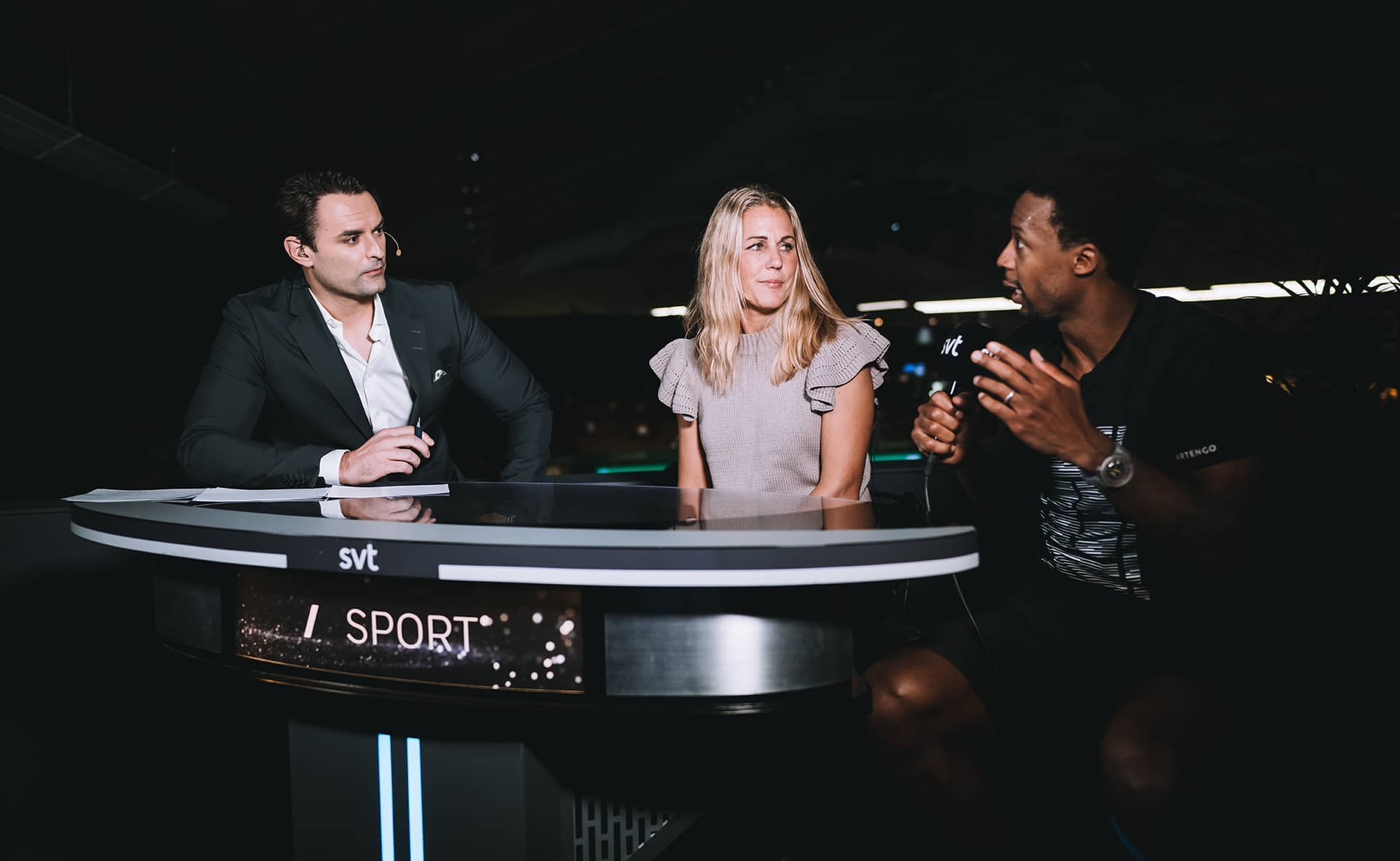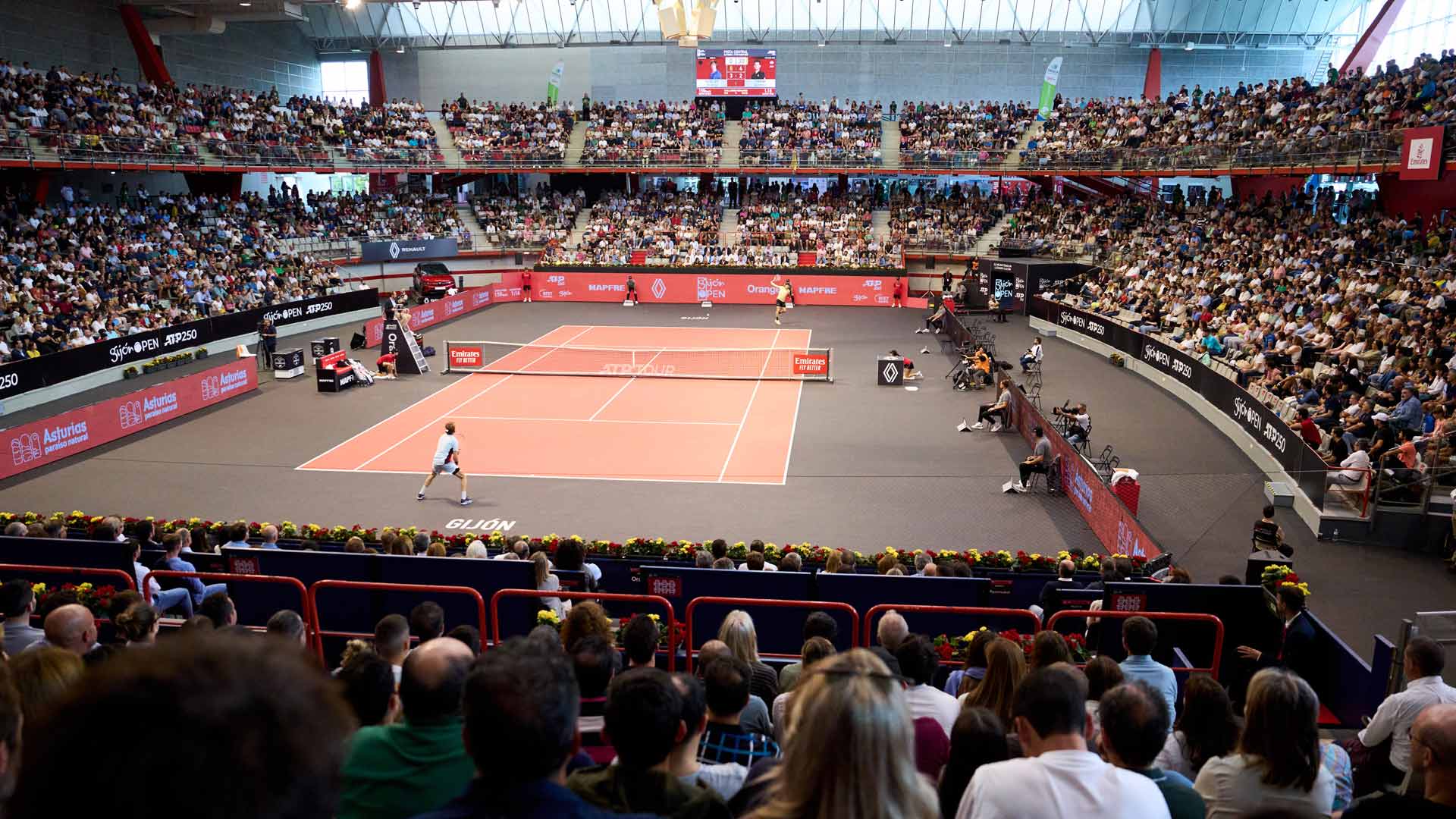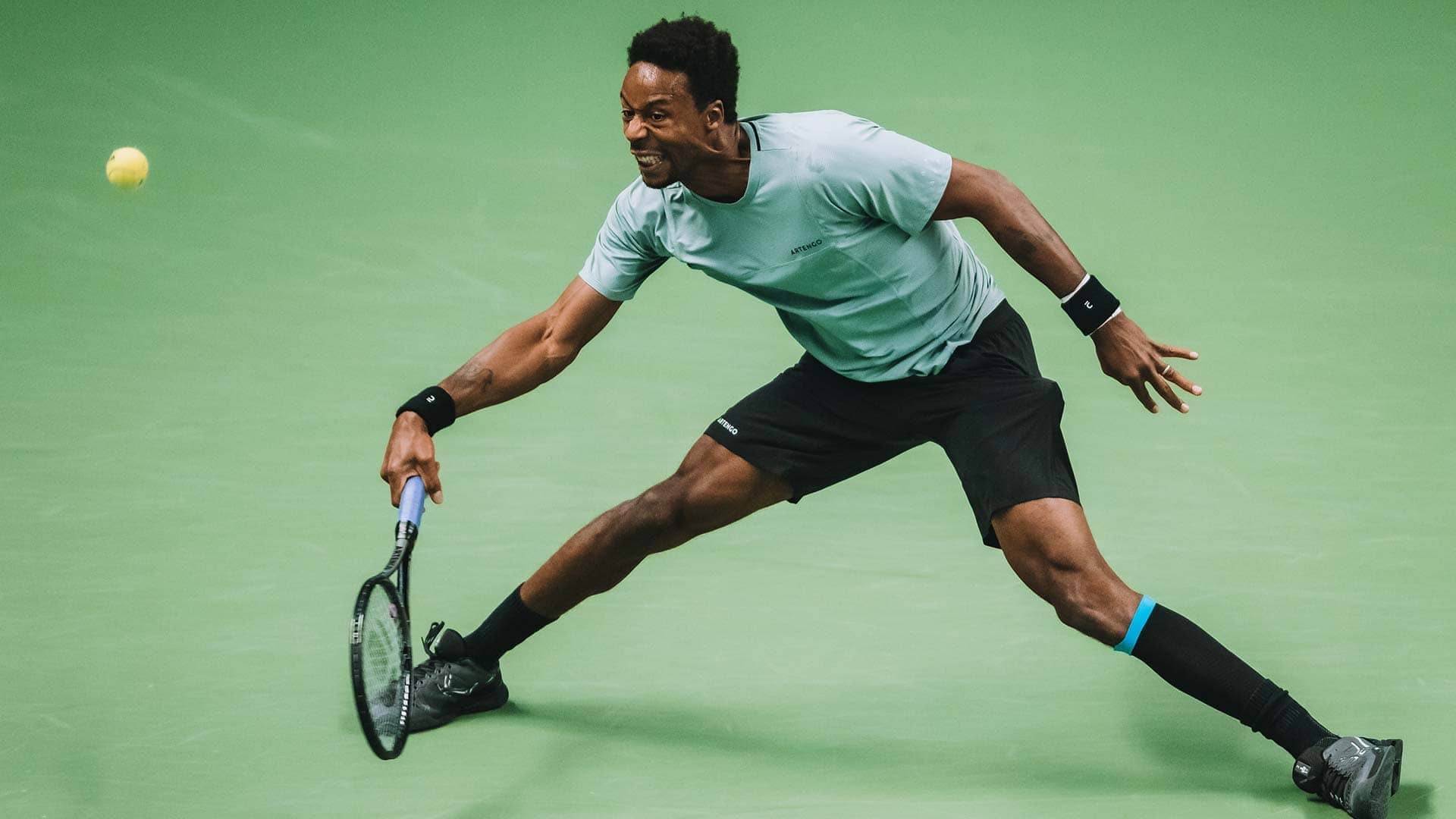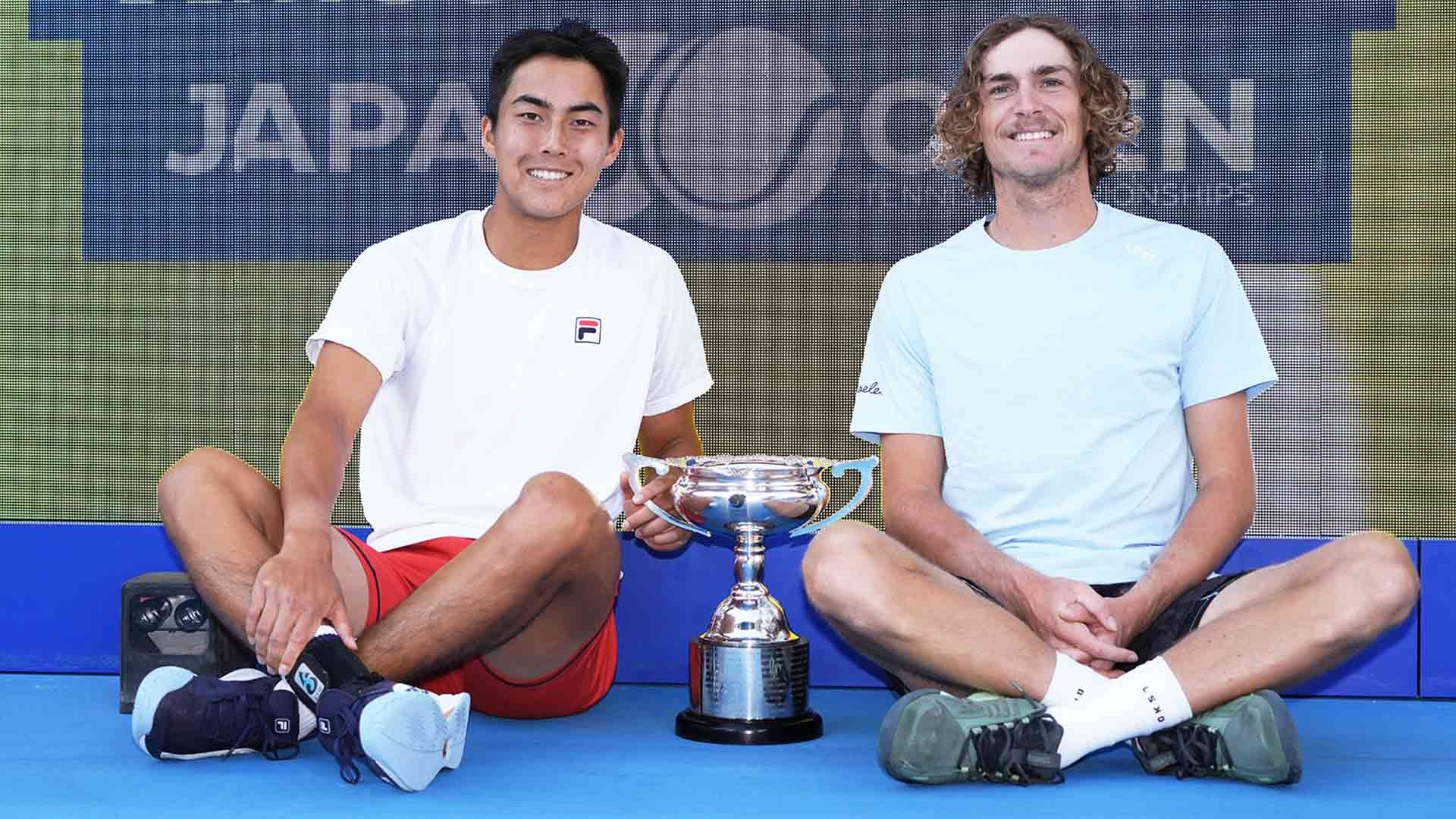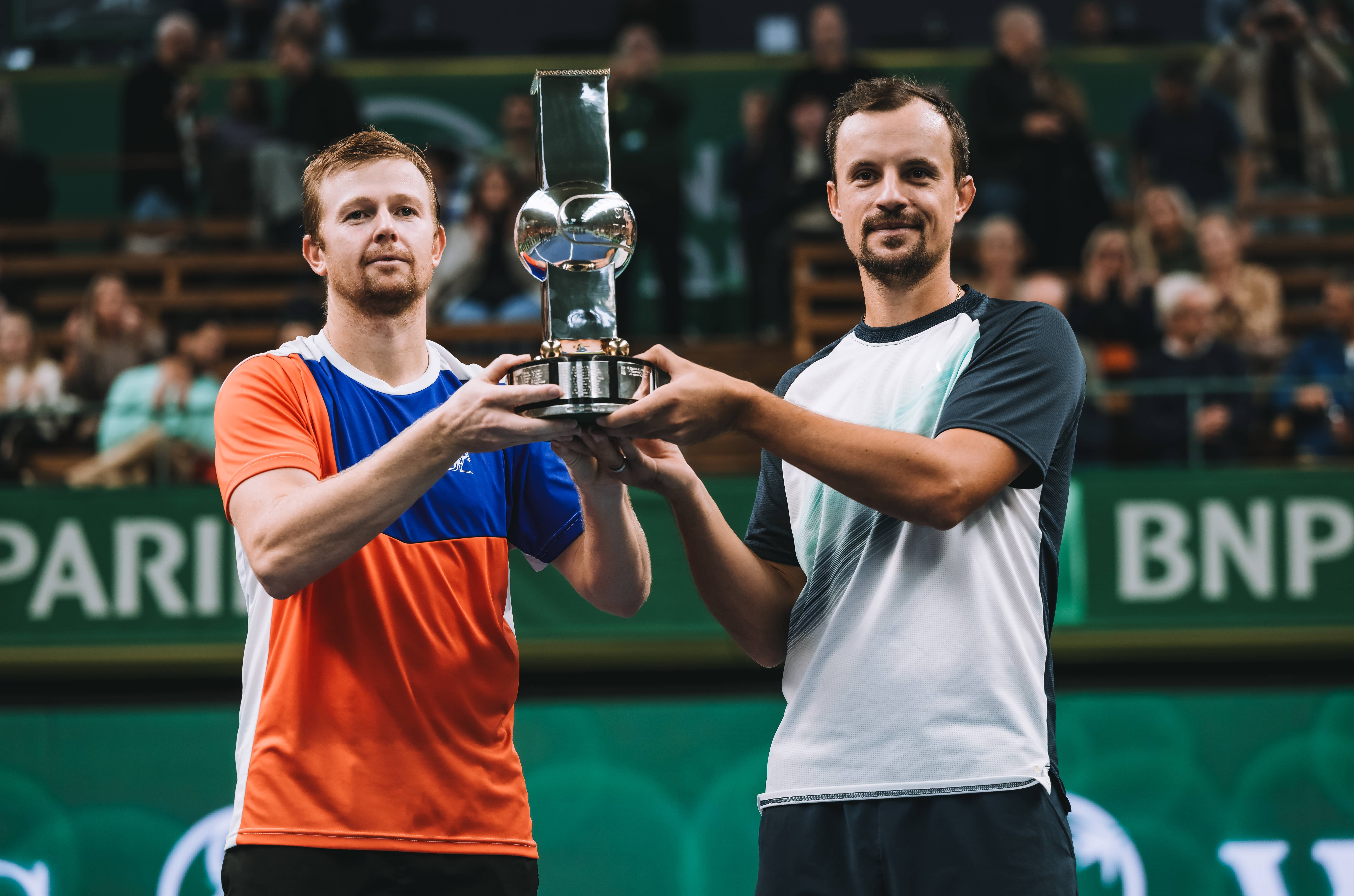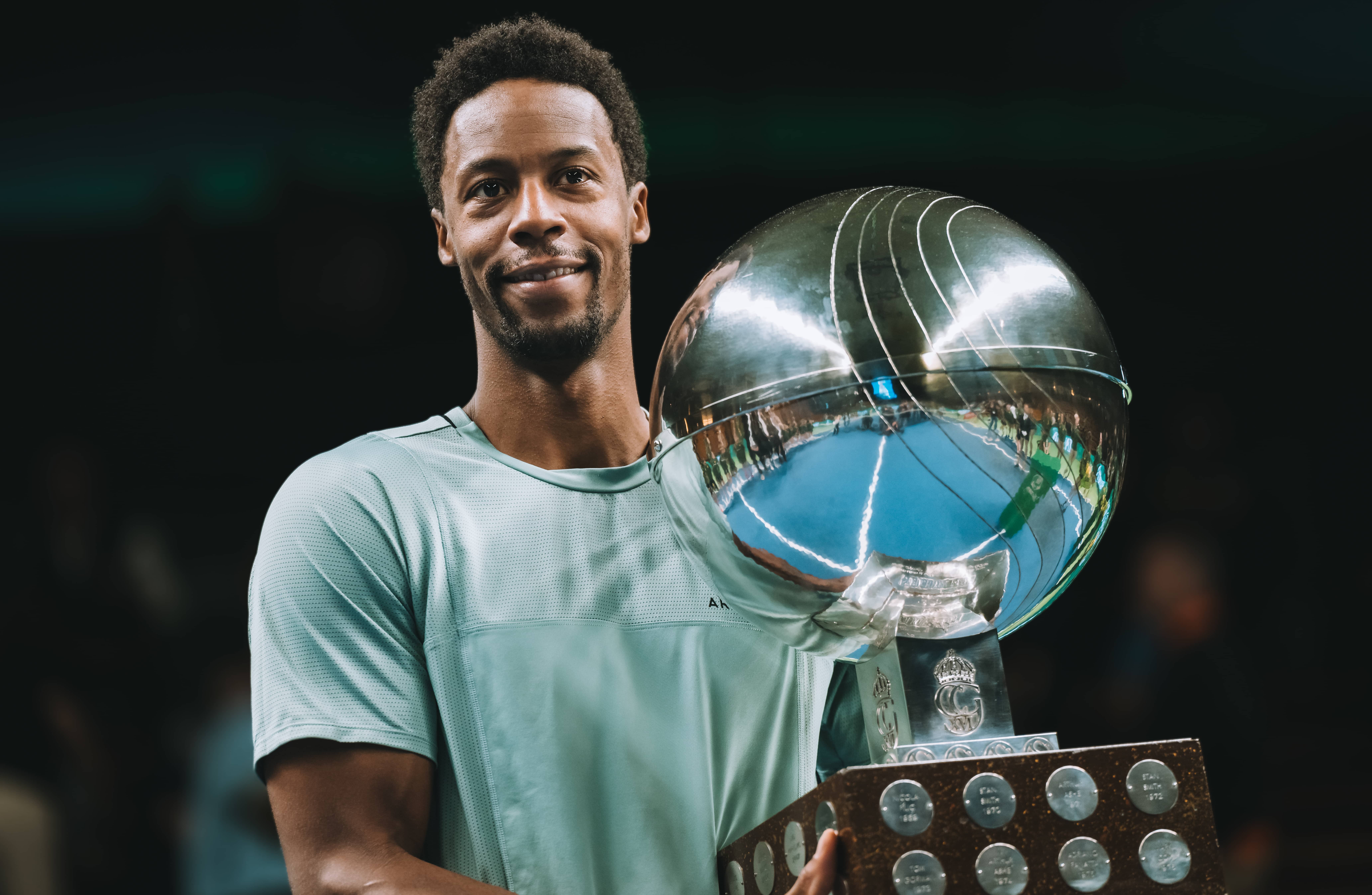1990
Edberg in the final but Kulti pleased the most
Many from the world elite were present – it was tempting to play in front of 12,000 spectators, and no other indoor tournament could offer that.
The lack of Swedish depth at the top was a concern. Out of the 16 seeded players in the field, only two were Swedes: Stefan Edberg, seeded first, and Jonas Svensson at 15th place.
Mats Wilander was unseeded and had the misfortune of facing Edberg in the second round. An easy match for Stefan, 6–4, 6–3, and he powered on to the final. Or...powered on might not be the right expression; he advanced through on experience and strength, never truly convincing.
In the final, he faced a Boris Becker in great form and was helpless. The German won 6–4, 6–0, 6–3.
The big exclamation mark for Sweden was 19-year-old Nicklas Kulti, who reached the quarterfinals and emerged as the great Swedish hope for the future.
1991
Becker had to work for the victory
The field was top-notch. All four Grand Slam winners were present, including Stefan Edberg who had found new energy and won the U.S. Open in late summer. And Ivan Lendl was back as well.
But it wasn't Lendl's tournament. He was knocked out in the third round by his fellow countryman Petr Korda, who had once been a ball boy when Lendl played.
Edberg showed that his form was still intact, and so did Becker. Thus, a final rematch between these two took place. However, this time it was truly a competitive match – Becker won again, but not without having to fight for every point. Stefan led 2–1 in sets, but Becker proved stronger in the end, winning both the fourth and fifth sets 6–2.
Another old warrior who returned to Stockholm was Jimmy Connors. He was now 38 years old and this time a real crowd favorite. But he was knocked out in the second round.
1992
Ivanišević bombed his way to victory
Croatian Goran Ivanišević showcased both his feared serve and his sense for dramatic effects as early as 1991, but he had to withdraw due to an injury.
Now he was back, and despite the organizers choosing a slightly slower surface than before, he blasted his serving cannons match after match.
Moreover, his return game was strong enough to win all his matches and consequently secure the final victory and prize money.
Stefan Edberg came close to defeating Ivanišević in the semifinals but had to yield with a score of 6–4, 7–6 – 10–8 in the tiebreak – and thus, the final was played without Swedish participation for the first time since 1981. Frenchman Guy Forget was his opponent, but he didn't measure up.
The starting field was of high quality, but more strong Swedes were needed to fill the Globe Arena. Only Edberg and young Henrik Holm managed to reach the quarterfinals.
1993
Stich enjoyed Sweden
The audience returned to the Globe Arena to some extent after the organizers had thought things through and presented some attractive innovations. Unfortunately, none of the Swedish stars made it as far as the semifinals, although both Jonas Svensson and Stefan Edberg came quite close.
1993 was German Michael Stich's big year for defeating Swedes. First, he led his Germany to a Davis Cup victory of 5–0 against Sweden in Borlänge, and then he came to the Stockholm Open and successively eliminated Micke Pernfors, Magnus Gustafsson, and Stefan Edberg on his way to the semifinals. There, he defeated Swiss player Marc Rosset, and he crowned it all by overpowering Goran Ivanišević and winning the final 3–1 in sets.
Or "overpowering" might not be the right word...he more or less met the Croat with his own weapon. A true cannon serve.
Yes, Stich certainly enjoyed Sweden in the early 90s.
1994
Back at the Royal Tennis Hall
Continuing to play at the Globe Arena began to seem rather pointless as the Swedish dominance in world tennis had waned.
It simply wasn't possible to attract 100,000 attendees to a tournament where the Swedes didn't even reach the semifinals. Therefore, it was only natural to bring the tournament back to classic ground, namely the Royal Tennis Hall.
This final tournament at the Globe Arena couldn't be avoided, though.
Out of the nine Swedes who participated, 24-year-old Magnus Larsson from Blekinge fared the best. He impressed in three rounds but had an unsuccessful day against Pete Sampras in the quarterfinals. Larsson fell in two straight sets, and thus, there was no Swedish presence in the semifinals this year either.
Croatian Goran Ivanišević reached his third consecutive Stockholm Open final but probably wasn't in his best form. He had clear issues against both the Swede Jan Apell and the American Andre Agassi but managed to escape those tight spots thanks to his sharp serve.
It started well even in the final against Boris Becker, as Ivanišević won the first set, but Becker took control and won 3–1.
1995
Enqvist held on all the way
The move from the Globe Arena to the classic venue on Lidingövägen was appreciated by most, even though the tournament was no longer classified as a Masters event.
Quite a few new players got the chance to showcase themselves in Stockholm. But not only new ones – for the first time in five years, 31-year-old Mats Wilander entered the tournament. The organizers rubbed their hands together, but Mats was rusty after several years away from competition and was knocked out in the first round. He was defeated by Mikael Tillström, who was ranked no higher than 39th in singles.
However, things went better for Thomas Enqvist, who had a successful 1995 season with five tournament wins. One of them was in Stockholm – he struggled against the German Dreekmann in the first round but then cruised through. Over the course of the week, he defeated Stefan Edberg among others, and in the final against Frenchman Arnaud Boetsch, his baseline play was impeccable. He won in straight sets.
1996
Emotional farewell for Edberg
No Swede has been more loyal to the Stockholm Open than Stefan Edberg. He played his first match in the tournament in 1982 and participated every year until 1996.
Fifteen seasons.
He won in Stockholm in 1986 and 1987 and also lost two finals, both times – in 1990 and 1991 – against Boris Becker.
The farewell to both the Stockholm Open and his ATP career was emotional. Edberg loved the audience in Stockholm, and the audience loved Edberg.
Ideally, he would have liked to end with a big success, but unfortunately, he was knocked out in the first round against his friend Nicklas Kulti. Who in the next round himself was defeated by Patrik Fredriksson.
The entire tournament was a Swedish success. Three of the semifinalists were Swedes, and Thomas Enqvist took home the first prize again. He won the final against Todd Martin in three straight (though close) sets: 7–5, 6–4, 7–6.
It could have been an all-Swedish final, but Magnus Norman had to withdraw from the semifinals against Martin due to injury.
1997
Reneberg a winner at last
A true Stockholm Open fighter bid farewell to the audience at the Royal Tennis Hall this autumn.
American Richey Reneberg had traveled across the Atlantic for eleven years, to nearly every tournament, but rarely got to play more than two matches before it was time to pack up and move on. This guy obviously liked Stockholm.
He wasn't a bad player at all, but he was always pitted against one of the big guns, and that was it. Stefan Edberg, Boris Becker, and Todd Martin knocked him out twice, Micke Pernfors, Thomas Enqvist, and finally the Frenchman Cédric Pioline once each.
Still, Richey could end his love story with the Stockholm Open as a winner. In 1997, he won the doubles tournament together with German Marc-Kevin Goellner.
In singles, it was a Swedish victory for the third year in a row. But this time, it wasn't Thomas Enqvist who won but 25-year-old Jonas Björkman from Alvesta, who lost the first set of the final to the Dutchman Jan Siemerink but gathered himself and won three straight sets.
1998
Sudden fall for Sampras
He was a fairly recent Wimbledon champion. He was on his way to becoming the world number one again. He was the tennis king of the 90s.
And to the Stockholm Open he came after a four-year absence, Pete Sampras, the man with the most feared serve in tennis.
We had our own world number ones present for many years, but this was still the biggest thing to happen to the tournament in a long while.
The reason he appeared was that he needed ranking points and requested a wild card.
He got it.
But it all fell flat. Sampras was exhausted, almost burnt out, and was knocked out in the first round by the rather average Australian Jason Stoltenberg (who was defeated by Thomas Johansson in straight sets in the quarterfinals).
Thomas advanced all the way to the final but lost to Todd Martin, one of Pete Sampras' bitterest competitors in the USA and the world. He had the misfortune of being at his peak simultaneously with Sampras, Andre Agassi, Jim Courier, and Michael Chang and referred to himself as "the fifth Beatle."
But in Stockholm 1998, he was the one playing the first violin.
1999
All-Swedish final as the clay specialist ignited
Borg, Wilander, and Edberg had left the stage, but Swedish tennis still stood relatively firm. At least in the Stockholm Open, where ten Swedes were on the starting list.
Three of them were actually at the semifinal level: Thomas Enqvist, Magnus Norman, and veteran Magnus Gustafsson, who made his eleventh appearance in the tournament and achieved his best result.
Magnus was best on clay and won in Båstad four times during his career. In Stockholm, he was unseeded but impressed from start to finish. Not least when he defeated Jonas Björkman in the quarterfinals with 6–4, 0–6, 7–5. A real nail-biter that the audience passionately lived through.
In the semifinal against American Jean-Michael Gambill, Magnus won the first set 6–0 and might have thought it would be an easy victory. But Gambill fought back and took the second set, leading to a tense third set. In the end, the Swede won 7–4 in the tiebreak.
But Gustafsson didn't secure a tournament victory. Thomas Enqvist had played top-notch tennis all week and won the final in straight sets. His third Stockholm Open title in five years.



